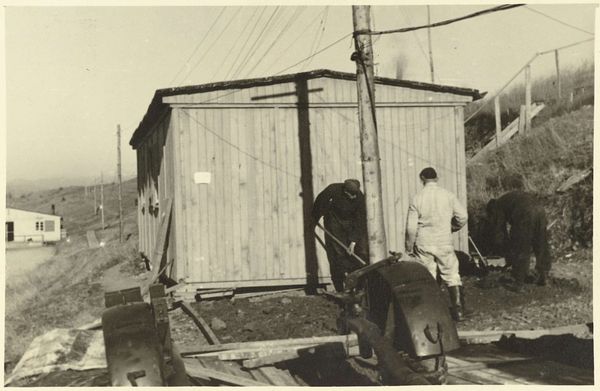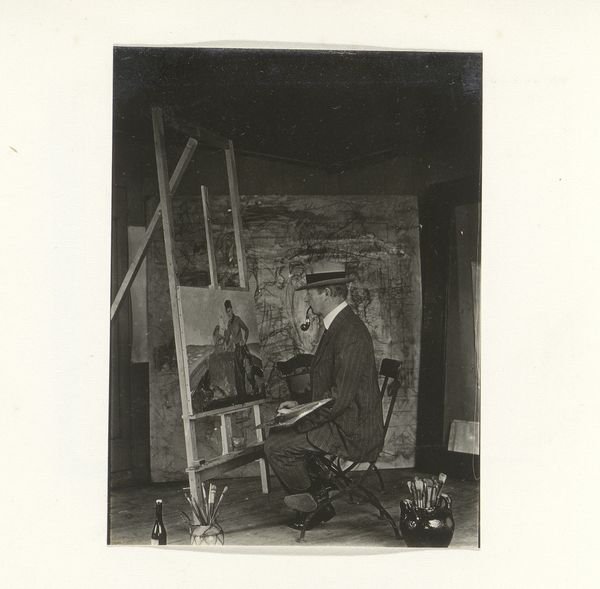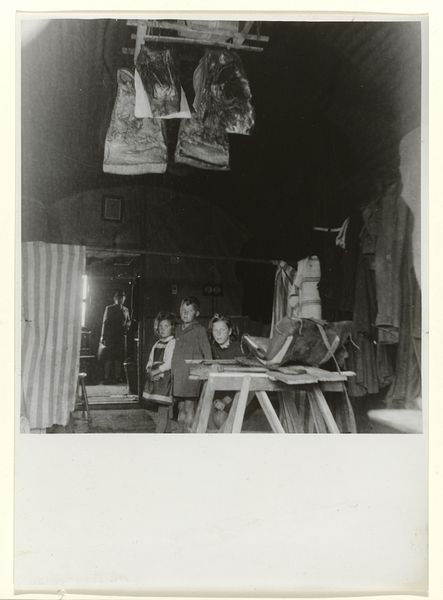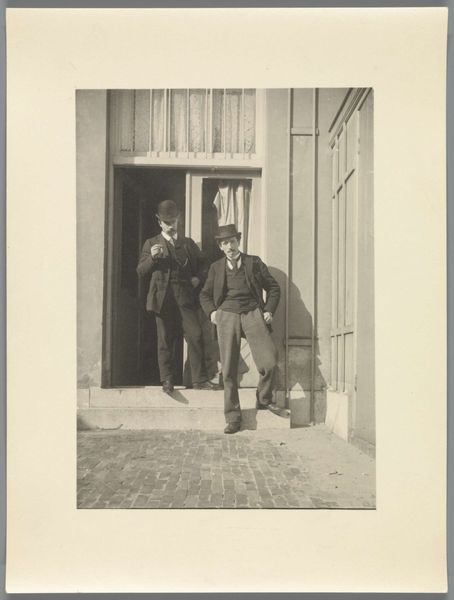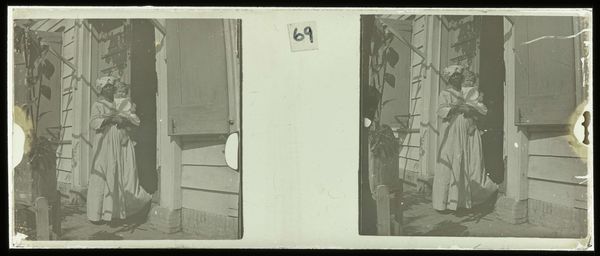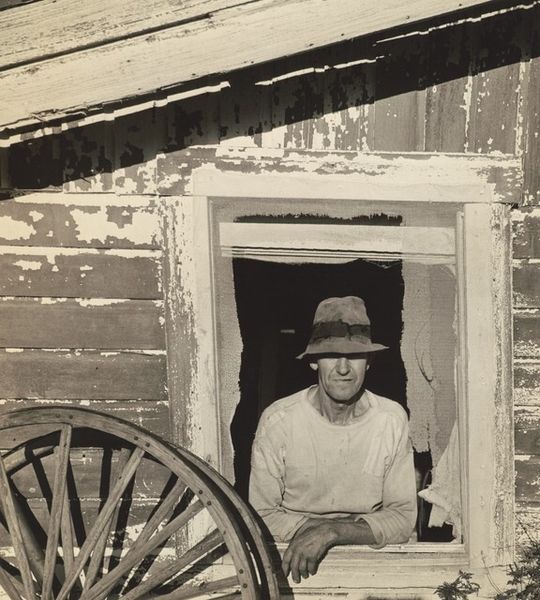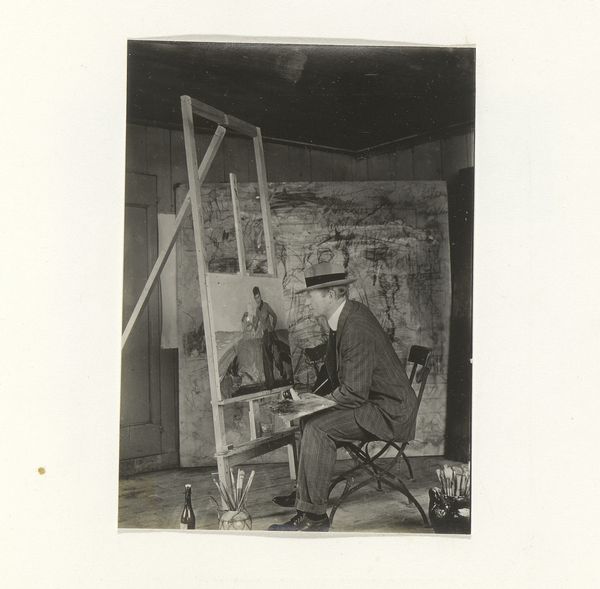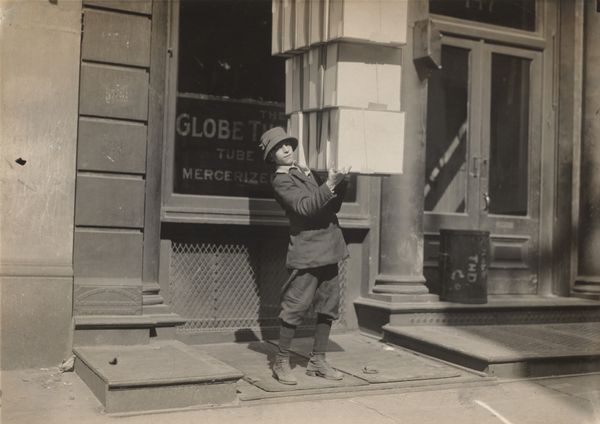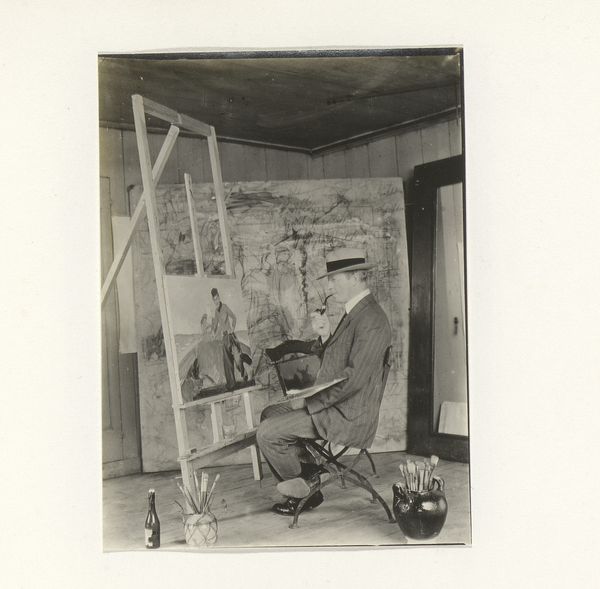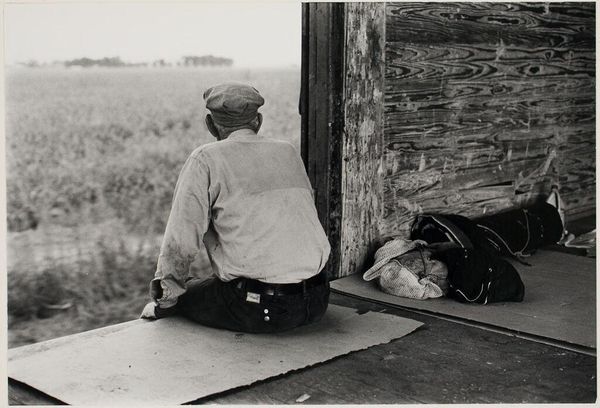
print, photography, gelatin-silver-print
#
portrait
#
print photography
# print
#
landscape
#
archive photography
#
street-photography
#
photography
#
historical photography
#
gelatin-silver-print
#
ashcan-school
#
realism
Dimensions: sheet: 20.2 x 25.3 cm (7 15/16 x 9 15/16 in.)
Copyright: National Gallery of Art: CC0 1.0
Curator: This somber photograph, titled "Barn--Omaha, Nebraska," was captured by Robert Frank in 1956. It’s a gelatin silver print, exhibiting a striking blend of realism and introspective observation. Editor: It immediately evokes a feeling of weariness. The tones are muted, and the central figure seems burdened, caught between the shadowed doorway and the harsh realities suggested by the unadorned wooden structure. Curator: Observe how Frank uses the geometry of the barn, the sharp angles of the door frame, to draw our eye to the man’s contemplative pose. There’s a certain formalism at play here, creating a powerful sense of spatial confinement and psychological depth. Editor: Indeed. And that confinement speaks volumes about the socio-economic conditions. The roughly hewn planks, the visible labor in the barn’s construction – all point towards a context of agricultural work, struggle, and perhaps even exploitation. The sign regarding producers salesmen becomes ironically oppressive when framed like this. Curator: I am drawn to the tonal range within the black and white; how Frank manipulates light to convey a particular mood. It's this command of tonal qualities that elevates the everyday subject. The Ashcan School influences can be easily noticed here. Editor: I see more than just light. Consider the act of making the image. This print has a textural presence, one that alludes to a very physical making. This photo embodies a labor story, from the sitter to the image itself. That inherent physicality lends this otherwise simple composition considerable force. Curator: There’s an undeniably profound emotional resonance to be felt. Through the sharp contrast and strategic arrangement of shapes, Frank invites the viewer to contemplate themes of solitude. Editor: Ultimately, by using a tactile medium like the gelatin silver print, and capturing scenes from life such as this Nebraska barn, it highlights the physical means of production—something typically obscured when considering fine art. It serves as a record of process and challenges traditional artistic value frameworks. Curator: The carefully observed tonality combined with this precise use of line guides the eye and captures something that stays long in memory. Editor: Yes, seeing it this way we recognize photography as an intervention: capturing human realities in space and time through both creative, manual and machine labor.
Comments
No comments
Be the first to comment and join the conversation on the ultimate creative platform.


